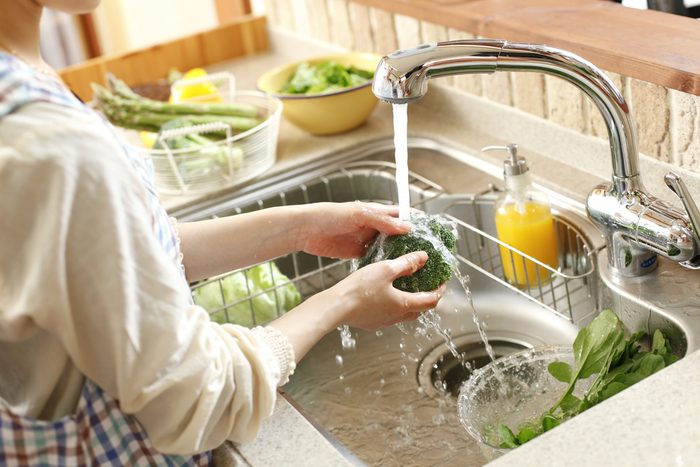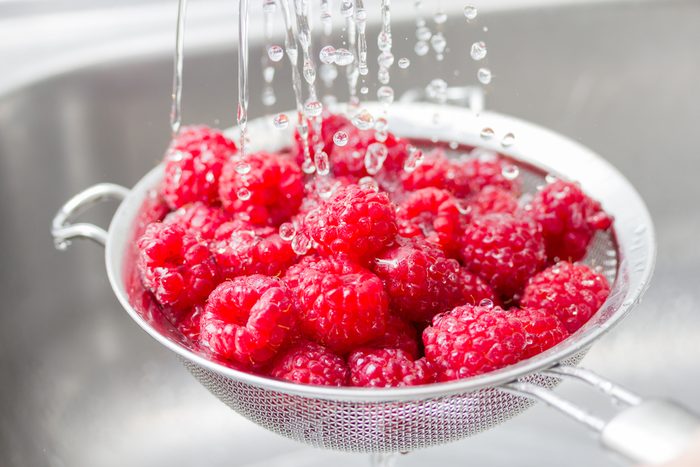
How to properly clean fruits and veggies
The truth is, you don’t need detergent, bleach solutions or special sprays to properly clean produce. All you need is water. We promise it’s just for eliminating pesticide residues.
The best way to reduce the number of unwanted germs is by washing produce under running water that’s no colder than 10 degrees cooler than the produce. Rinse produce under running water for 30 to 60 seconds – there’s no need for soaking. Then, rub the produce briskly to remove dirt and surface germs.
And before preparing produce, clean countertops, knives, and cutting boards. Also, give your hands a thorough cleaning with soap and water.
Do your best to avoid avoid having fruits and vegetables stored for a long time by buying locally grown produce and preparing it within five days. Remember that washing then storing produce can speed bacterial growth and spoilage. So wait to wash fruits and vegetables until right before using.
What needs rinsing and why
Different types of produce require different kinds of cleaning. On the next page, you’ll find an easy guide for cleaning the produce you always cook with at home.

Here’s how to wash your favourite fruits and veggies
Berries and grapes
Rinse gently under cool, running water. Don’t let berries sit in water, as that can ruin them. Sort through and remove moldy or squishy pieces to avoid spreading any microorganisms.
Leafy green vegetables
If it’s a single head, cut off the base and discard dried or damaged outer leaves. Soak the remaining leaves in a bowl of cold water for a couple minutes. If you’re particularly concerned about bacterial contamination, add a half cup of distilled white vinegar per cup of water, then rinse produce under running water for 30 to 60 seconds – there’s no need for soaking. Dry with paper towels or a salad spinner.
Apples and other firm produce
Wash and rub enough to remove any waxy preservatives.
Herbs
Dip and swirl herbs in a bowl of cool water, then dry with a paper towel.
Mushrooms
Use a soft-bristled brush to lightly scrub and a wet paper towel to remove dirt.
Peaches and other soft fruit
Lightly wash peaches under running water and dry with a paper towel.
Melons
Wash foods with non-edible rinds such as melons and oranges before you cut them because external bacteria can transfer inside.
Carrots and root vegetables
Use a scrub brush for hard foods, such as carrots and potatoes. And don’t forget to clean the brush, too.
Mushrooms
Wipe mushrooms with a damp cloth and pat them dry with a towel.
